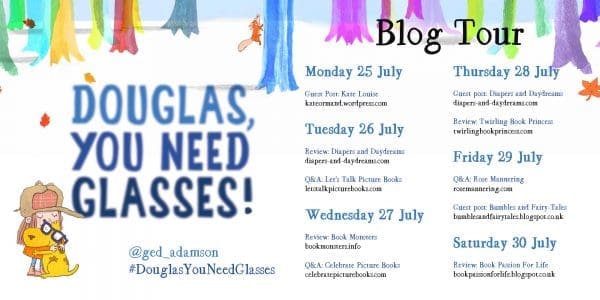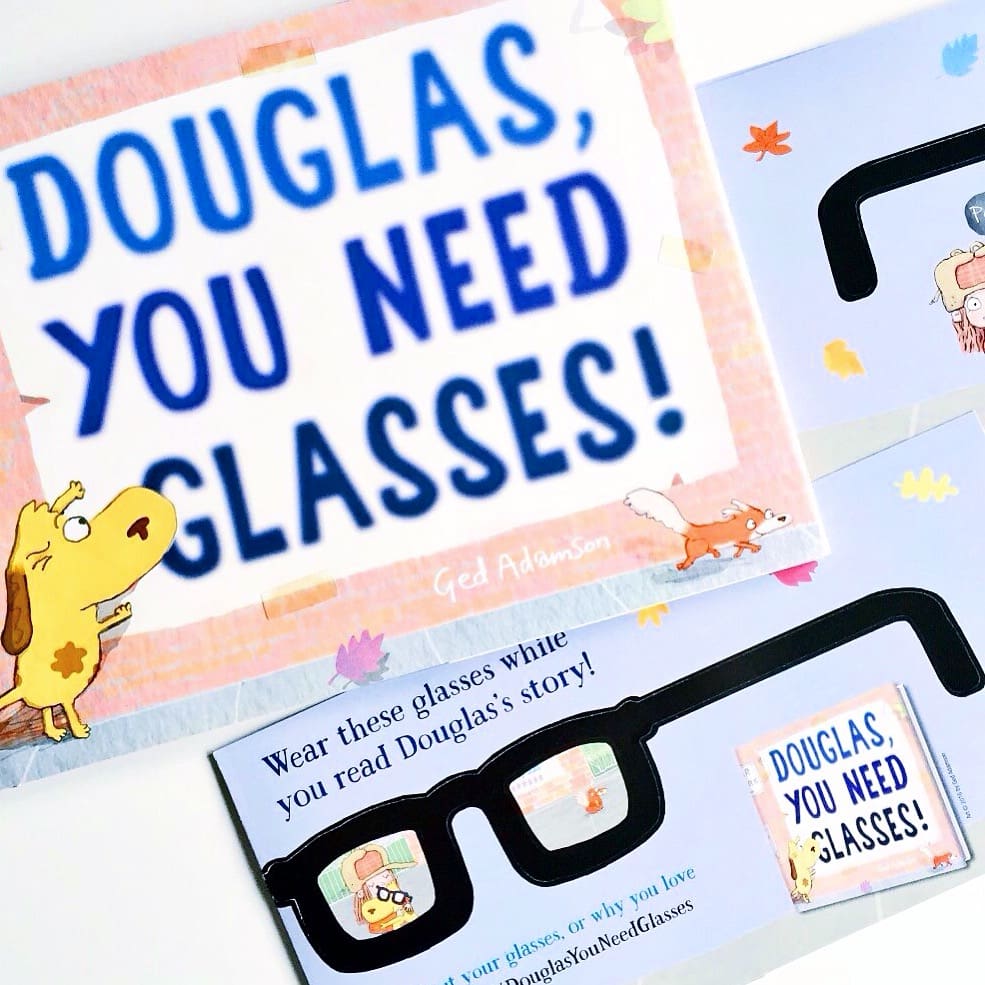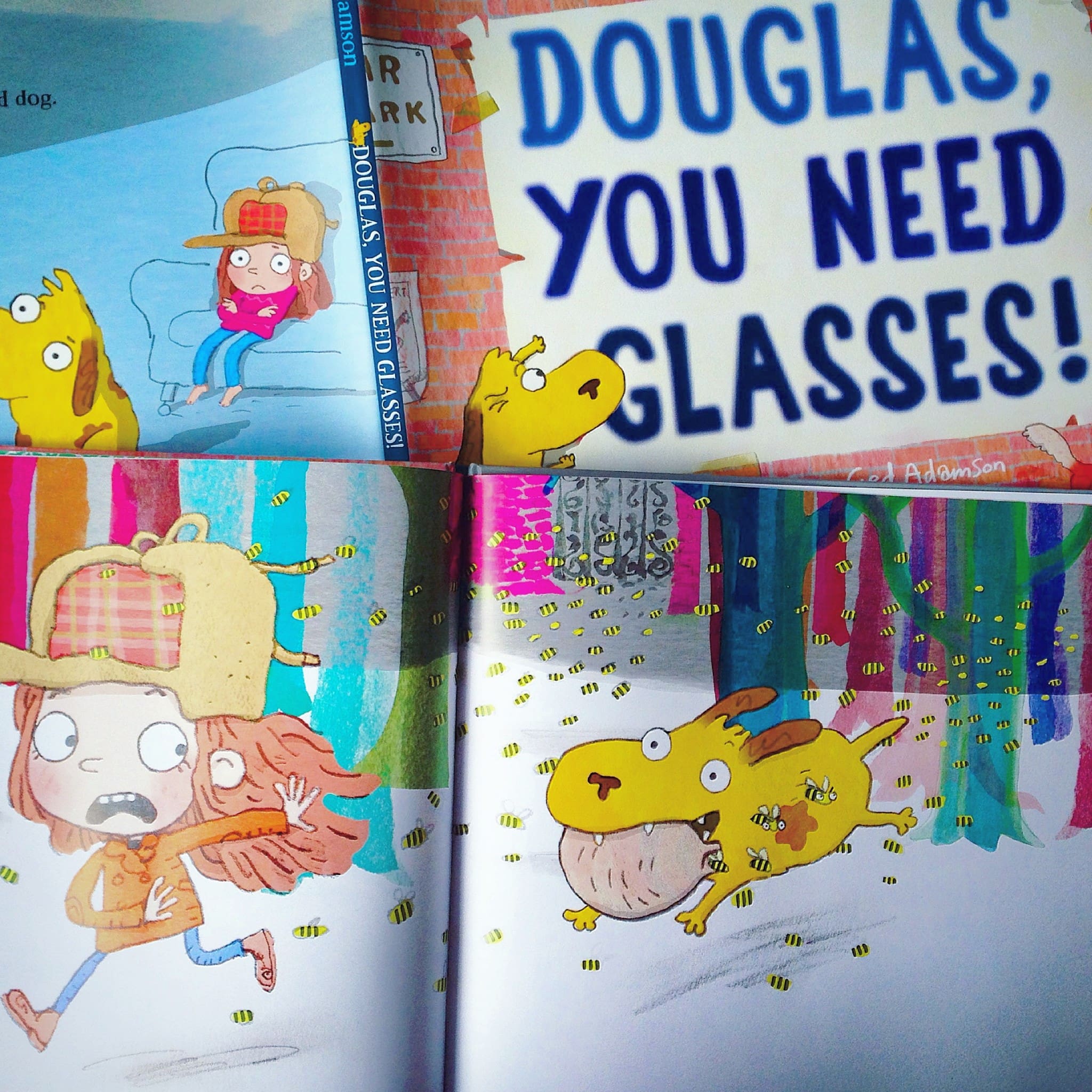
1. Research
Borrow picture books, buy picture books, browse them and read them in bookshops but do immerse yourself in the whole world of them. I’ve heard so many people talk about getting involved in this genre without bothering to explore it. Simon Cowell dismissed picture books as rubbish but this assertion was based on the few he’d read to his own child.
A knowledge of picture books from the past is very useful but if you want to work in this area of literature, you also have to know what’s going on now – not 10 years, 5 years or even 1 year ago. You have to have some idea what is selling, what are the current trends in art and what a modern picture book generally looks like. This is an essential foundation to start from.
2. Idea
A picture book should have, at its core, an idea. An agent or an editor asks you what your book is about – what do you say? There has to be some basic original concept. It can be a variation of something that’s already been done but there has to be something in there that’s your own. If you’ve been asked to describe your book, it should only take a sentence or, at most, two:
‘A boy’s crayons get fed up with misuse and decide to quit – each colour leaving a goodbye note.’
‘A panda offers other animals doughnuts but withdraws the offer each time when he’s met with rudeness.’
‘A cake is horrible to everyone including his parents until a group of giant Cyclops mistake him for a hat.’
‘A bear decides the best way to get his hands on honey is by disguising himself as a bee and joining bee school.’
Each of these brief descriptions* would make me laugh and want to know more. If your idea needs a long drawn out explanation, the chances are it either needs work or is the wrong idea for this genre.
3. Message
One thing you have to keep in mind is the ‘message’ your story is trying to convey. What positive idea would you like children to come away with after reading your book? You’ll be expected to provide this but don’t worry, any good story will have something to leave the reader with – even if it’s as simple as ‘it’s good to help other people’.
But don’t be too explicit or heavy handed with this message. There’s nothing worse than a children’s book being finger wagging and preachy. Personally I wouldn’t put it in the text of the story itself in any obvious way. The images should do a lot of the work here.

4. Don’t Patronise
A lot of people with ambitions in the picture book world will be under the impression that it’s all about bunnies, dragons, bears, cute farm animals and pirates – and if you’ve done really nice pictures of these things, that’s the hard part out the way. A flimsy story about learning manners will be the icing on the cake.
Kids will be just as bored with staple characters as you are if there’s no original and unexpected story attached to them. It’s very hard to find a successful picture book that’s about a magical munchkin world of fairies and teddy bears. The ones that editors go for are usually rooted in some kind of everyday reality – even if that reality is represented by a dinosaur who can talk!
5. Be Funny
I think the best thing you can do to help get your book published is make it funny. Make an agent and an editor laugh! If your story is funny, the chances are something unexpected is happening in it, your characters are likeable and have drawn the reader in. Quite often, a child will feel more moved at the end of a story if they’ve laughed in the middle of it. If something amuses you, it will probably amuse a kid too. Go into a book shop and look at the picture books on the main display – see many earnest, serious ones? Thought so!
6. Economy
Picture books generally have 32 pages with which to tell a story. The emphasis is on ‘picture’ – so it’s best to keep your word count around 500 or lower. Personally, I like to aim for about 400 words. I think the best picture books have a feeling of everything being there for a reason. Whether that’s illustration or text – nothing should be ‘filler’. Think of it like a great pop song – if the verse sounds fantastic with just bass, drums and vocal, don’t add anything else!
Often, you can just have simple drawings on white backgrounds with a little bit of text and, providing your idea is good, this will do the job in a wonderfully elegant way. The white space will pull the reader in and focus them on what’s happening in the story.
7. Presentation
If you’re a writer but not an illustrator, I think it really helps with selling your idea if you can give a sense of what your picture book will look like in its final form. As someone who often looks at submissions and suggests edits and improvements, a manuscript on its own won’t get me as interested as one with at least rough sketches to accompany it. If you can do this yourself or get someone to do those sketches for you, in my opinion it will give you an advantage.
Put it all together in a PDF (make sure it’s no bigger than 6Mb) but don’t go overboard on your mocked up book. What I mean by this (and again this is only my own opinion) is don’t put dedications and things like ‘no part of this publication may be reproduced etc…’ and all kinds of copyright stuff. It’s just jumping the gun and, to me, annoying. And your agent should have all this covered. Which brings me to my next point…

8. Get An Agent
Having an agent will give you a big advantage in getting your book seen by an editor. Most publishing companies won’t look at unsolicited manuscripts – that is, a manuscript or book idea not introduced to them by an agent. If your work is good, there will be a professional agent somewhere who will represent you.
Don’t let a friend, relative or friend of the family do this if they’re not actually a literary agent who work with children’s authors or, at the very least, in a children’s publishing position. Your agent needs to know the genre you’re aiming to be published in and have experience placing books in this area so if someone only has clients in, say, factual and business literature, they probably won’t be any good for you.
I found my fabulous agent in the Children’s Writers & Illustrators Yearbook. If you’re looking for representation and you’re based in the UK, I strongly recommend you buy or borrow this book.
And once you’ve got your agent, don’t expect them to do everything for you. You will still have to play a large part in selling your work and promoting yourself as an author. See it like a partnership and, ideally, a friendship. You’re both after the same things and you’ll use your different skills together to reach those objectives. In other words, be nice.
9. Deal With Rejection
It’s tough out there – even in the lovely world of picture books. It’s extremely hard to get an offer from a publisher. Editors and agents you approach will say horrible things about your work. And it still happens after you’ve been published, believe me. Unless you’re very lucky, it’s inevitable. You have to get used to it and develop a thick skin.
Often the criticism will be justified and you have to take it on board. A well heeded comment from someone in the business could make all the difference in getting your next book placed. You have to be able to spot the occasional helpful suggestion in the barrage of ‘No’s’.
But do keep your chin up and get better and better. Always be your own critic but try and do this in the most constructive way. Stay positive!
10. Do It Because You Love It
If you’re thinking of entering the world of picture books because you think it’s an easy option, I’d strongly advise you to look elsewhere. Sorry for using this analogy again but as anybody who’s ever tried to write a good pop tune will tell you, it’s hard! Do this because you love the genre not because you see it as a big market. Do it because it’s something you’ve always wanted to do and not because someone said you’d be good at it. Do it because you love it!
“Since being represented by Isabel and Creative Authors, my career has blossomed. She has opened up opportunities in markets I would never have considered and ferreted out great deals for me – including a movie deal! Creative Authors is a great organisation to have behind you.”
Anthony Galvin, Creative Authors Client